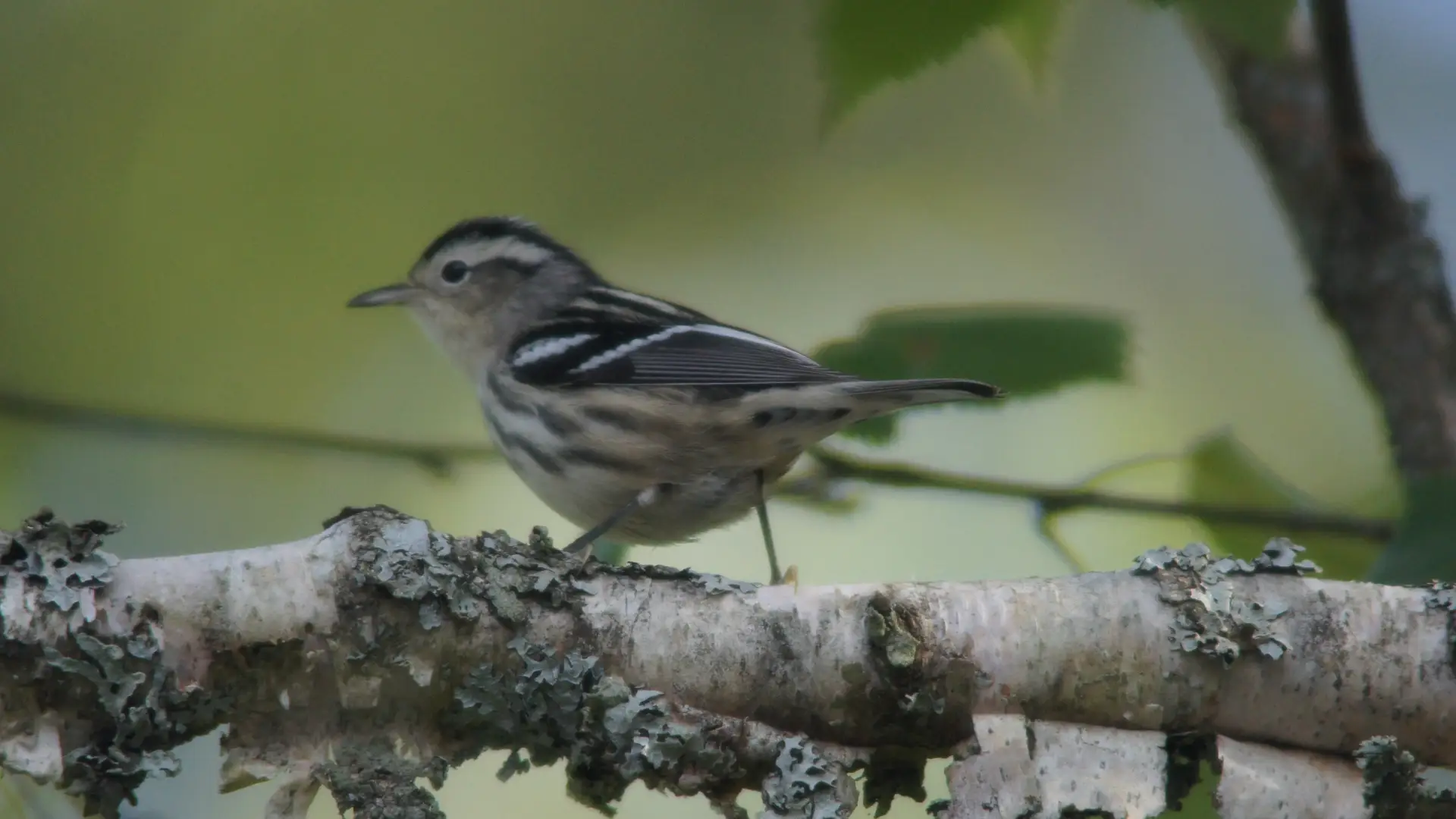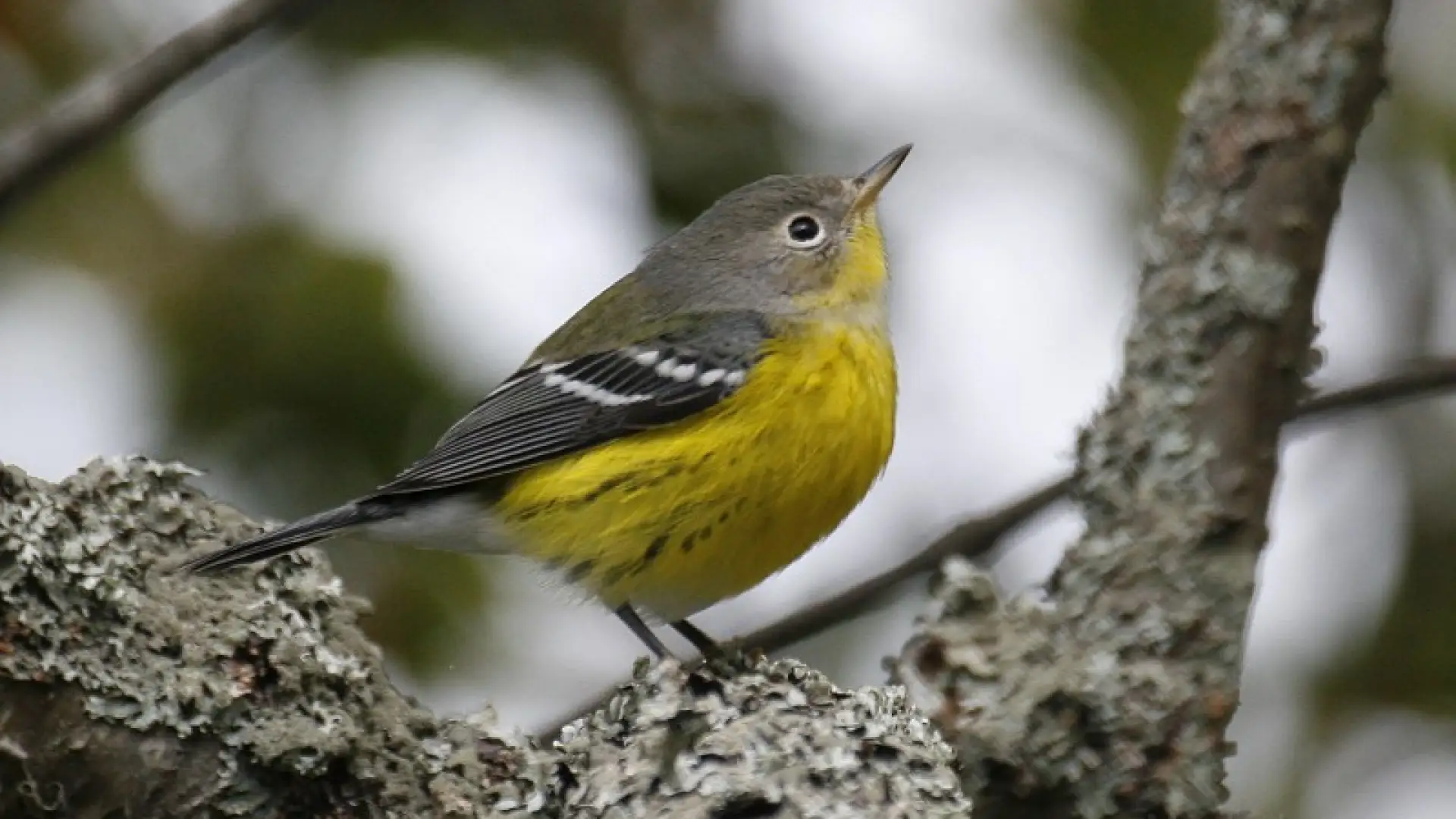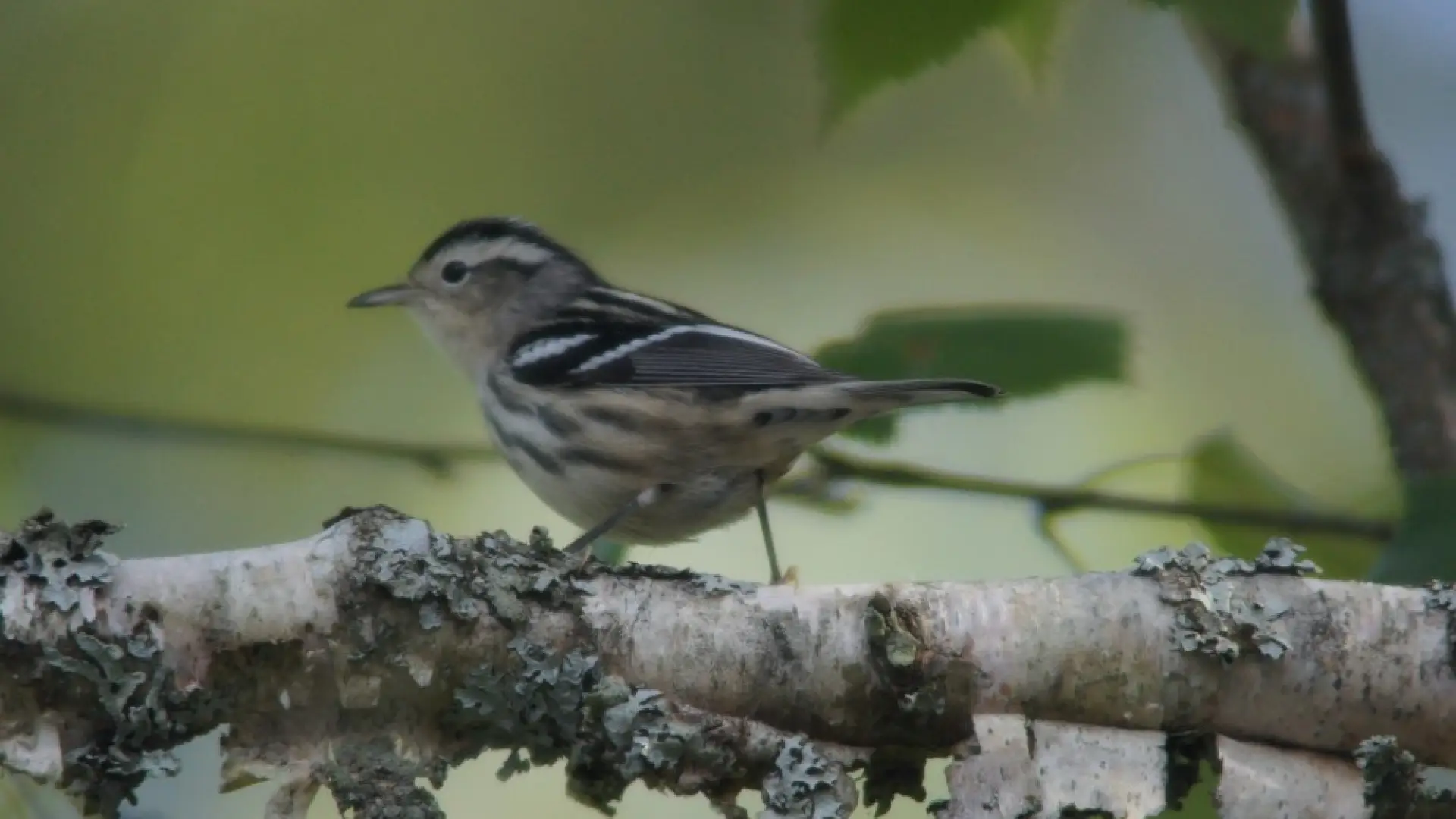
Late summer is one of my favorite times of year in the North Country. Wildflowers cover fields and line trails, cool nights bring rise to autumn colors, and post-breeding mixed flocks of songbirds move through the trees and bushes. It is a time of mixed feelings for me. After all I enjoy summer's warm swimming weather. As for the birds, this time of year signals that we are near the end for many of our species. Most of them will migrate away, leaving us with the chilly silence of autumn.
Most of our birds are neotropical migrants, meaning they fly to Latin America or the Caribbean for the cold months – something many of us wish we could do ourselves. But these final few weeks while they are still around in the North Country are some of the most exciting birding weeks of the year.

Come late summer, there are more birds around than there were in spring – after all, many birds just fledged their young. That may not be immediately apparent because bird song drops off during the summer. Song is used by birds for two chief purposes – defending territory and attracting mates – and once birds have succeeded in doing that (some species nest only once in a season, others can nest two or even three times), they tend to sing less. And while there are birds like red-eyed vireos which sing much of the summer, even they are mostly quiet by late August.
Instead of singing birds, we have small groups of songbirds moving through the trees feeding. They are often making chipping calls – called chip notes – that serve as communication within in the flock. We also call many of these chips "contact notes". These essentially help keep a loose flock of birds together. Staying together could aid in protection against predators or aid in food finding among other things.
These contact notes are one of the reasons I listen for black-capped chickadees this time of year when I'm out looking for warblers and other songbirds. Chickadees chatter incessantly and their constant contact notes help keep these mixed-species flocks of birds together, leading them through the forest. So if you are interested in finding late summer warblers, it is a smart idea to find the chickadees first.

Because there isn't much song this time of year, part of the fun with late summer warbler flocks is the surprise of what you find. No species are obviously declaring themselves and you have to search them out. That can sometimes be challenging, but that challenge is also part of the fun. And since birds are migrating south, they end up in habitats where they wouldn't normally breed, and birds that breed north of here are moving south, giving us a chance to find them. For instance, last week while I was working on the Jackrabbit Trail in Saranac Lake, I found two Cape May warblers – a species that only seldom breeds in Adirondack boreal habitats. These two males were migrants and exciting to see.
One challenging aspect of late summer and fall songbirds can be their plumages. Young birds often look different than their parents and many adults have molted since breeding and now sport quite different looking attire than their spring finery. Couple that with the lack of identifying songs and you can have a tricky identification conundrum on your hands. But such challenges should not offer reasons to skip out on late summer birding, but rather give reason to study a bird's shape, size, as well as their fall plumages. It can be a lot of fun.
But it is the sheer number of birds and species migrating through the area that makes birders most excited. Just last weekend I found 14 species of warblers – including bay-breasted and Canada warblers – in a couple small flocks while I was hiking in the Five Ponds Wilderness Area in the western Adirondacks. I routinely head to the Bloomingdale Bog trail this time of year to find flocks of warblers flipping through the brush-lined trail. I prefer the south end of the trail which begins just north of Saranac Lake (there is a cutout of a black dog which marks the parking area off Rt. 86). Sometimes I only walk the first couple hundred yards down the trail because there are so many birds to look at along the marsh at the beginning of the path.

But any place is fair game. You can be greeted by waves of warblers and other songbirds on any trail across the region. Two years ago I counted 21 species of warblers in my Saranac Lake yard during a few weeks in late summer and early fall. Last year, I found 17. This year so far diversity has been lower in my yard, but there are many more birds to migrate down through the area. And so as I write and work from home I always have one eye and ear tuned to what's outside my window – with my binoculars handy. That is usually the case, but during this time of year when our birds are restlessly roving through the woods and others are pouring in from the north, it is a way of life. As a result, good birding days can be poor in terms of me accomplishing much work, but it's not a bad trade-off. After all, the birds are heading south for the next several months and we need to get out and enjoy them while we have a chance.